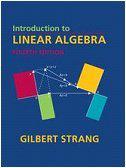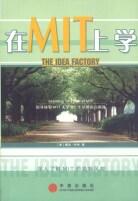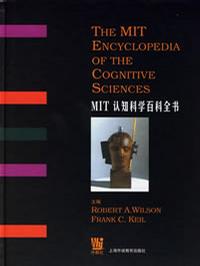-

Introduction to Linear Algebra, Fourth Edition
Gilbert Strang's textbooks have changed the entire approach to learning linear algebra -- away from abstract vector spaces to specific examples of the four fundamental subspaces: the column space and nullspace of A and A'. Introduction to Linear Algebra, Fourth Edition includes challenge problems to complement the review problems that have been highly praised in previous editions. The basic course is followed by seven applications: differential equations, engineering, graph theory, statistics, fourier methods and the FFT, linear programming, and computer graphics. Thousands of teachers in colleges and universities and now high schools are using this book, which truly explains this crucial subject. Chapter 1: Introduction to Vectors; Chapter 2: Solving Linear Equations; Chapter 3: Vector Spaces and Subspaces; Chapter 4: Orthogonality; Chapter 5: Determinants; Chapter 6: Eigenvalues and Eigenvectors; Chapter 7: Linear Transformations; Chapter 8: Applications; Chapter 9: Numerical Linear Algebra; Chapter 10: Complex Vectors and Matrices; Solutions to Selected Exercises; Final Exam. Matrix Factorizations. Conceptual Questions for Review. Glossary: A Dictionary for Linear Algebra Index Teaching Codes Linear Algebra in a Nutshell. -

Readings in Database Systems
http://redbook.cs.berkeley.edu -

在MIT上学
本书作者佩珀·怀特曾就读于MIT的机械工程系,他凭借睿智的眼光、情文并茂的描写,对自己早年在MIT辛酸的求学、生少和创业经历进行了全景式的回放,以“身在其中”的方式展示出MIT的独特风貌,带给读者关于人文精神的深刻反思。在与作者共同缅怀这段黄金岁月的过程中,相信每一个对MIT心存向往的人,都能够身临其境,切实体验到在MIT学习、生活的每一个平实的日子。 -

Structure and Interpretation of Computer Programs - 2nd Edition (MIT)
Structure and Interpretation of Computer Programs has had a dramatic impact on computer science curricula over the past decade. This long-awaited revision contains changes throughout the text. There are new implementations of most of the major programming systems in the book, including the interpreters and compilers, and the authors have incorporated many small changes that reflect their experience teaching the course at MIT since the first edition was published. A new theme has been introduced that emphasizes the central role played by different approaches to dealing with time in computational models: objects with state, concurrent programming, functional programming and lazy evaluation, and nondeterministic programming. There are new example sections on higher-order procedures in graphics and on applications of stream processing in numerical programming, and many new exercises. In addition, all the programs have been reworked to run in any Scheme implementation that adheres to the IEEE standard. -

MIT认知科学百科全书
Since the 1971s the cognitive sciences have offered multidisciplinary ways of understanding the mind and cognition. The MIT Encyclopedia of the represents Sciences(MITECS)is a landmark,comprehensive reference work that represents the methodological and theoretical diversity of this changing field. For both students and researchers,MITCS will be an indispensable guide to the current state of the cognitive sciences. “The cognitive sciences emerged in recognition of the fact that scholars and scientists in many different fields shared common problems and needed to collaborate. Now at last The MIT Encyclopedia of the Cognitive Sciences has provided a forum large enough for that interaction to occur——a forum that will not only facilitate cooperation but will educate a new generation of cognitive scientists.”——George Miller,Professor of Psychology Emeritus,Princeton University “At last,a thorough,authoritative source for work in the cognitive sciences. Take the most important topics in the study of cognition,ask the worlds top authorities to summarize the state of the art,and you have it:The MIT Encyclopedia of the Cognitive Sciences. I have already used it to learn,to browse,to inform,to teach,and to update my own understanding.It doesnt matter which end you seek:the book will frequently be in use.” ——Donald A. Norman. The Nielsen Norman Group;Professor Emeritus,Department of Cognitive Science,University of California,San Diego;and author The Invisible Computer “Among the human minds proudest accomplishments is the invention of a science dedicated to understanding itself:cognitive science. In less than fifty years,deep mysteries of antiquity have been brought into the lab and captured in rigorous theories. This volume is an authoritative guide to this exhilarating new body of knowledge,written by the experts,edited with skill and good judgment.If we were to leave a time capsule for the next millennium with records of the great achievements of civilization,this volume would have to be in it.” ——Steven Pinker,Professor of Psychology,Massachusetts Institute of Technology;and author of How the Mind Works and The Language Instinct.